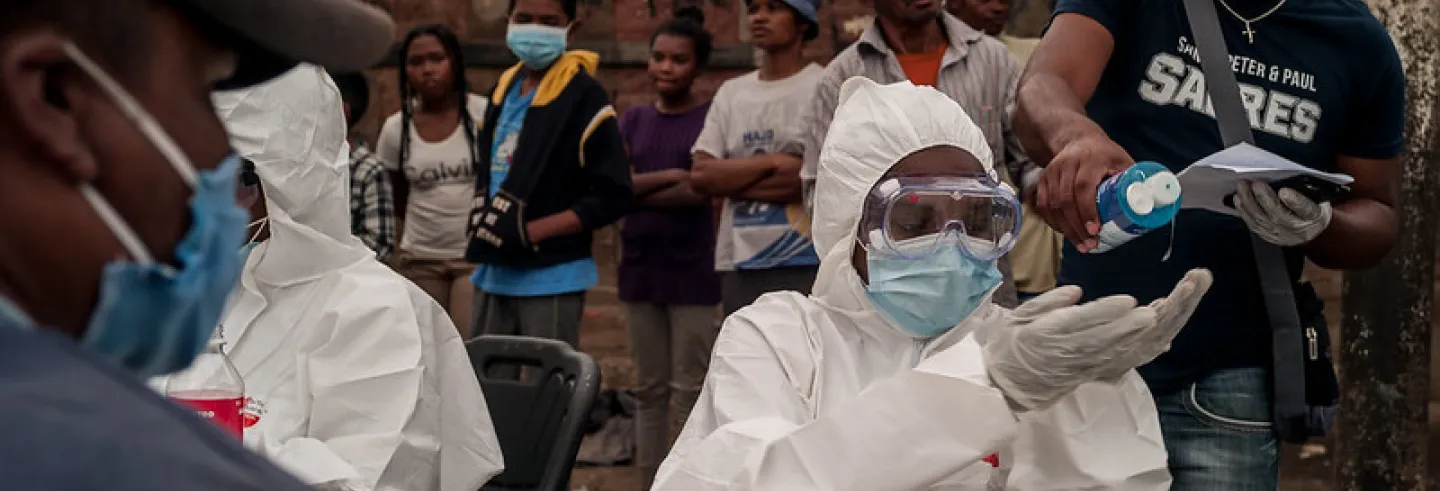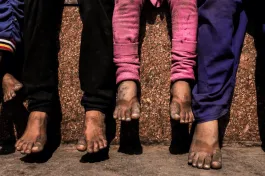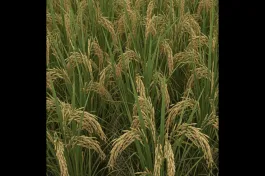Bangladesh has earned a reputation as a low-cost manufacturer of quality medicines. It exports pharmaceuticals to more than 100 countries in Asia, Africa, and Latin America. Some products of Bangladesh's leading drug companies have been approved for marketing in the regulated markets of developed countries that have much tougher standards, including in the US, Europe, and Australia. Bangladesh has also started manufacturing medicines patented in other countries and is supplying these to global markets at low prices.
Can Bangladesh do for Covid-19 and other diseases what India in the 2000s did for HIV/AIDS: provide expensive therapeutic drugs at low prices?
As in the case of the Covid-19 pandemic, there was initially no treatment for AIDS. After an effective three-drug-combination was introduced in the mid-1990s, deaths declined in developed countries. But people in developing countries continued to suffer because the cost of these drugs, at $10,000 per person per year (pppy), was simply unaffordable. The price was high because these products were patented and the multinational corporations (MNCs) holding the patents prevented other firms from entering the market. In response to an international outcry over the high prices, the MNCs did provide some discounts. But due to cumbersome procedures followed, the progress in providing treatment universally was extremely slow.
Indian companies are no longer able to sell drugs patented after 1995 unless they get voluntary licences from the patentees or compulsory licences from the government. But no such restrictions are applicable to Bangladesh.
AIDS drugs became affordable and accessible only after generic production was started by Brazil and later, India. Until 2005, India did not recognize product patent protection in pharmaceutical products. Indian generic firms were thus free to manufacture and supply these AIDS drugs which did not have product patents in India. In 2001, the Indian firm Cipla offered to supply any country the three-drug combination at $350 pppy. With other Indian companies following Cipla and entering the market, the price of the drugs fell to less than $100 pppy by 2008. India soon became the dominant source of AIDS drugs for the vast majority of the people in low and middle income countries, supplying about 100 developing countries. With the reduction in price, from less than 1% of people with HIV in low and middle income countries receiving treatment in 2000, by 2017 59% were receiving the treatment.
From 2005 onwards, though, India has fully adhered to the World Trade Organization’s agreement on Trade-Related Aspects of Intellectual Property Rights (TRIPS), introduced in 1995. Indian companies are no longer able to sell drugs patented after 1995 unless they get voluntary licences from the patentees or compulsory licences from the government.
But no such restrictions are applicable to Bangladesh. TRIPS permits Least Developed Countries (LDCs) like Bangladesh to delay imposing these restrictions until 2033. Using this flexibility, Bangladesh in 2008 abolished product patents on pharmaceuticals.
Bangladesh has a developed pharmaceutical industry, where local firms have a market share of more than 90%. The top 10 firms are local firms.
What is significant here is that unlike other LDCs, Bangladesh has a developed pharmaceutical industry. Uniquely too, local firms dominate the industry, with a market share of more than 90%. The top 10 firms are local firms (Chaudhuri 2020). The size of the pharmaceutical market in Bangladesh was estimated to be 260.1 billion taka ($3.1 billion) in 2019. There are about 150 firms currently operating in the country and the industry has been expanding with a compound annual rate of growth of about 15% in recent years. The country is self-reliant in formulations, meeting about 97% of the local demand.
To analyse whether Bangladesh can replicate India’s story, we will here briefly trace the evolution of the pharmaceutical industry in the two countries. Both countries initially had a very liberal policy towards MNCs which dominated the technologically-intensive pharmaceutical sector. But the MNCs were more keen on importing and marketing these products, rather than manufacturing them locally and developing a domestic industry. In both countries, the respective governments had to intervene to promote the growth of a domestic industry. Some of these policies were implemented despite foreign opposition and pressure.
In the 1950s and 1960s India set up public sector plants and government research laboratories for pharmaceuticals. These public investments in manufacturing and research laid the foundations for the technological development and the growth of the industry.
The mode of intervention in Bangladesh has, however, been somewhat different from that in India, resulting in different outcomes. This has implications for the international role that Bangladesh can play in drug supply during the Covid-19 pandemic.
What India did till the 1990s
Pharmaceutical manufacturing has two technologically distinct components. The first is the manufacturing of active pharmaceutical ingredients (APIs) and the second is manufacture of formulations by processing the APIs into finished forms such as tablets and injections. Independent India wanted to develop the industry from its basic stages. But MNCs were not keen to manufacture APIs and the domestic private sector was not yet technologically ready. Therefore, in the 1950s and 1960s India set up public sector plants and government research laboratories for pharmaceuticals. These public investments in manufacturing and research laid the foundations for the technological development and the growth of the industry.
Despite opposition from MNCs and from developed countries, India in the early 1970s abolished product patent protection in pharmaceuticals, eliminating the monopoly that MNCs enjoyed till then. By that time, Indian firms too had become technologically ready to take advantage of the market that had been created. This led to a dramatic growth in domestic production, spearheaded by Indian firms, and the loss of dominance by MNCs (Chaudhuri 2005, chapters 2 and 4). By the early 2000s, local firms had developed the capacities to manufacture both APIs and formulations, allowing them to produce and export AIDS drugs. A number of firms manufacturing the same drug ensured not only competitive prices but also adequate capacities to supply the drugs in large volumes for HIV/AIDS patients around the world.
What Bangladesh did till the 2000s
Bangladesh’ pharmaceutical industry grew on a different route. It developed out of the recommendations of a military-government-appointed expert committee of 1982, which approached the problem both from an industrial policy objective of promoting local production, and a health policy objective of removing non-essential products from the market. The Drugs (Control) Ordinance of 1982, later converted into a law, accepted some of the committee’s recommendations related to marketing and manufacturing of formulations.
Going beyond what India did, Bangladesh banned the manufacture and imports of drugs identified by the expert committee as harmful, unnecessary, or otherwise undesirable. Bangladesh also banned MNCs that did not have their own plants in the country from marketing drugs manufactured on a contract basis by local firms (Chowdhury 1995, chapters 3 and 4; Reich 1994).
Unlike in India, firms in Bangladesh, remained import dependent for APIs and for technologically advanced and patented formulation products [...] Bangladesh found it cheaper to import APIs than to develop them domestically.
This eliminated a significant part of the market for the MNCs, since many of their activities were related to non-essential drugs. Local firms gained a market for simple generic formulations that were earlier imported or manufactured by MNCs. As in India, local firms in Bangladesh too grew dramatically.
The 1982 expert committee, perhaps influenced by the success of the India story, had also recommended the abolition of product patents in pharmaceuticals and government support for the development of the API sector. However, these recommendations were not immediately accepted. Thus, unlike in India, firms in Bangladesh remained import dependent for APIs and for technologically advanced and patented formulation products.
The underdevelopment of the API sector did not constrain the growth of Bangladesh' formulation sector. APIs for producing generic formulations were readily available not only from developed countries, but also from developing countries such as India and China, whose highly competitive API sectors became major suppliers at low prices. 1 India is competitive in technologically advanced APIs but is unable to compete against China in run of the mill APIs, making it dependent on China for the bulk of its API supplies.
Hence, unlike India in the initial stages of development, Bangladesh was not compelled to develop the API sector. In fact, the cheap imports acted as a disincentive for domestic production. This would emerge as a major problem in the longer run.
What Bangladesh did since the late 2000s
In 2008, Bangladesh started implementing some of the unfulfilled recommendations of 1982. The government abolished product patents in pharmaceuticals and began the construction of an API park. There have been considerable delays in building the park, which is still not operational. But the abolition of product patents with the extended freedom Bangladesh has under TRIPS has had a major impact. It has done for drugs enjoying product patent protection elsewhere in the world what the 1982 drug ordinance did for generic drugs. Bangladesh’s drug firms started diversifying production and ventured into manufacturing more complex formulations including vaccines, monoclonal antibodies, biotech products, and hormones.
In Bangladesh, local firms supply some of these medicines [...] at a fraction of the cost in India. These wide price differentials have led to the entry of products from Bangladesh into the Indian market.
A highly competitive market has since developed for generic versions of patented products in Bangladesh. As a result of such competition, generic version of patented products are available in Bangladesh at a fraction of the cost of the branded product of the originator company, according to Kaiser Kabir, vice president of the Bangladesh Association of Pharmaceutical Industries and CEO of Renata, a leading Bangladeshi pharmaceutical firm. For example, Incepta, a local firm, created quite a stir when in 2015 it launched the generic version of the patented Hepatitis C drug Sofosbuvir at $10 a tablet, compared with $1000 in the US — reminiscent of what India did for AIDS drugs.
What is striking is the differences between the prices of patented products in India and Bangladesh. Before TRIPS, India was known for its ability to manufacture and sell patented products at low prices. But after the reintroduction of product patent protection and the restrictions on the production of generic versions of post-1995 patented drugs, MNCs have taken advantage of their monopoly to charge exorbitant prices, particularly for anti-cancer drugs. Free from such constraints, in Bangladesh, local firms supply some of these medicines, such as Ibrutinib, Osimertinib, Crizotinib, and Palbociclib, at a fraction of the cost in India.
These wide price differentials have led to the entry of products from Bangladesh into the Indian market. Under India’s Intellectual Property Rights (Imported Goods) Enforcement Rules 2007, no penal action can be taken by customs authorities on goods contained in personal baggage or imported in small quantities intended for personal use. Such rules have been being abused for commercial purposes and traders are involved in smuggling high-value, low volume drugs from Bangladesh to India, according to the Organisation of Pharmaceutical Producers of India, which represents MNCs. The organization has taken this up with the Indian government to find ways of stopping such imports of patented products.
API constraints
The lack of local API production constrains Bangladesh from realizing the full range of benefits from the TRIPS flexibilities it currently enjoys. Only a few local companies are involved in manufacturing APIs, and none are able to manufacture the APIs required for new patented products. Unlike in the pre-TRIPS days, India and China, the traditional sources of API imports, now recognize product patents protection. Hence firms from these countries cannot officially manufacture and sell patented APIs or formulations to Bangladesh, except under limited conditions permitted under TRIPS. A possible way out is for Bangladesh to tie up with the patentees, but those MNC drug firms have not been keen to manufacture in Bangladesh, either directly or through local partnerships.
When local firms are able to get APIs at reasonable prices, the prices of finished formulations can be low. Otherwise the prices can be high since APIs constitute a major component of the cost of production of formulations.
In practice, patented APIs are primarily imported into Bangladesh from China and to some extent from India unofficially, according to top industry officials. 2 This discussion on how patented APIs can be or are imported into Bangladesh is based on interviews with the deputy managing director and head of international business respectively of two large firms and with the managing director of a medium size firm. The interviews were conducted on 5 and 6 March 2019 in Dhaka. The same channels taking Bangladeshi drugs into India are being used in reverse for importing most of the patented APIs. This is aided by the fact that Bangladesh’s Directorate General of Drug Administration is not required to check whether the APIs are imported from countries satisfying TRIPS requirements.
But even if Bangladeshi firms identify sources for APIs, the prices quoted can be high. When foreign suppliers realize that Bangladesh does not have too many options and are dependent on them, they sometimes charge high prices. When local firms are able to get APIs at reasonable prices, the prices of finished formulations can be low. Otherwise the prices are high since APIs constitute a major component of the cost of production of formulations.
So long as Bangladesh is dependent on imported patented APIs, the industry will not be able to control either the volume of production or the prices. Hence it may not have the same impact that India had during the AIDS pandemic.
Due to the problem of APIs, patented drug products that are manufactured locally constitute a small segment of the overall pharmaceutical market in Bangladesh, with a share of just 7.1% in 2019 (Fitch Solutions 2020, 18). Bangladesh could potentially manufacture many more patented drugs in larger volumes than at present. As the managing director of Active Fine Chemicals, the sole company in Bangladesh manufacturing only APIs, said: “There are more than 100 patented drugs that we can manufacture and sell whereas China and India cannot manufacture them. But we failed to take the full advantage of it.” (EBL Securities 2019, 39).
Bangladesh’s potential
Both the difficulty of sourcing APIs and the price uncertainty act as major barriers to Bangladesh taking full advantage of the TRIPS concessions. This is where India in the early 2000s during the AIDS pandemic and Bangladesh today are different. India was at the time able to develop an API industry and had the manufacturing capacity to supply the drugs to HIV/AIDS patients around the world. Bangladesh is now free to manufacture and supply drugs under product patents elsewhere, including any developed for Covid-19. It can export these drugs to other LDCs where product patent protection is not recognized. Other countries can import these drugs from Bangladesh through compulsory licensing or other measures consistent with TRIPS. Supplies from Bangladesh can compel the patentees to reduce the prices of patented products. But so long as Bangladesh is dependent on imported patented APIs, the industry will not be able to control either the volume of production or the prices. Hence it may not have the same impact that India had during the AIDS pandemic.
Indian generic companies cannot do during the present pandemic what they did during the AIDS pandemic. But Bangladesh firms can potentially play that role since the country continues to enjoy exemptions under TRIPS.
This can be illustrated by taking as an example one of the experimental drugs for treating Covid-19: Remdesivir, patented by Gilead in many countries. Gilead has entered into non-exclusive voluntary licensing agreements with generic firms to manufacture and distribute Remdesivir in 127 countries, including India. But this still leaves out more than 70 countries, accounting for nearly half the world’s population. These countries include those that do not have adequate manufacturing capacity and hence are unable to manufacture the drug through compulsory licensing in their countries. Gilead’s agreement restricts Indian firms from exporting the drug to these countries. Assuming Remdesivir becomes an approved drug for treating Covid-19, Indian generic companies cannot do during the present pandemic what they did during the AIDS pandemic.
But Bangladesh firms can potentially play that role since the country continues to enjoy exemptions under TRIPS. Countries that do not have adequate manufacturing capacity can grant compulsory licences to import generic versions of Remdesivir from Bangladesh. Such exports from Bangladesh will enormously benefit these countries as otherwise they may be at the mercy of Gilead as far as supplies and prices are concerned. But because of the difficulties of sourcing imports of patented APIs, it will be difficult for Bangladesh to supply the drug in the required volumes.
Thus Bangladesh may not be able to enjoy the full benefits of being currently free from the inflexibilities of the product patent regime of TRIPS unless its API sector is developed. It is fundamentally important to do so to realize the potential that Bangladesh has to be a major international player for other essential drugs. Some steps have recently been initiated in Bangladesh to develop the API sector. Given the impressive track record of the pharmaceutical industry in Bangladesh, with proper policy intervention there is no reason why Bangladesh cannot develop the API sector.
An earlier version of the paper was presented at a webinar organized by the Centre for Development Studies, Thiruvananthapuram, on 10 July 2020. I thank Sunil Mani and C Rammanohar Reddy for comments and suggestions.









